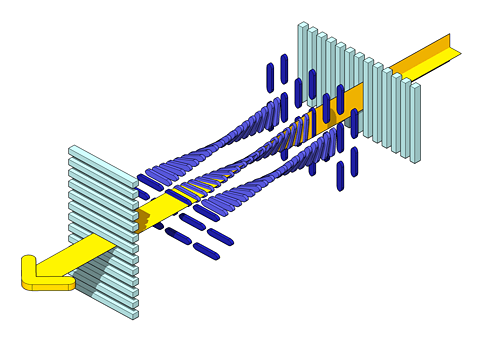- Get link
- X
- Other Apps
- Get link
- X
- Other Apps

Liquid crystals were discovered in 1888 by Austrian scientist Friedrich Reinitzer, and in 1927 a Russian physicist Vsevolod Frederiks discovered a transition, named after him, now widely used in LCD displays. In the 1970s, RCA first introduced a liquid crystal monochrome screen. Liquid crystal displays began to be used in electronic clocks, calculators, and measuring devices. Then began to appear matrix displays, reproducing a black and white image. In 1987, Sharp developed the first color liquid crystal display with a diagonal of 3 inches. How does the LCD display work? This is in today's issue!

The operation of the LCD or liquid crystal display is based on the polarization of the light flux. Liquid crystals "sift" light, passing only certain waves of a light beam with the corresponding polarization axis, and remaining opaque to all other waves. The change in the polarization vector is carried out by liquid crystals, depending on the applied electric field applied to them. In other words, with the help of electricity, one can change the orientation of the crystal molecules and thereby ensure the creation of an image.

Almost any LCD-display has an active matrix of transistors, with which the image is formed, a layer of liquid crystals with light filters that selectively transmit light, and a backlight system (usually from LEDs). The latter is necessary for displaying color images. LCD-display has several layers, the main of which are two glass panels, which contain a thin layer of liquid crystals among themselves. The panels have grooves that guide the crystals, giving them orientation. The grooves are parallel to each panel, but perpendicular between the two panels. In contact with the grooves, the molecules in liquid crystals are oriented identically in all the cells.

The LCD screen itself is an array of small segments - pixels. Each pixel has three transistors, each of which is responsible for one of the three colors, and a capacitor that maintains the required voltage. Combining the three primary colors for each pixel of the screen, you can get any color.
The most common at the moment are liquid crystal TFT-displays, in the active matrix of which thin-film transparent transistors are used. The number of transistors in such displays can reach several hundred thousand.

Among the advantages of LCD-displays are relatively low cost, excellent focus, very high image clarity and brightness. And also the absence of mistakes of color matching and flickering of the screen. The fact is that such displays do not use an electron beam, which draws each line on the screen. Of the disadvantages of LCD - the appearance of dead pixels due to the combustion of transistors, a small number of shades of color, the heterogeneity of the brightness of the picture (often lighting at the edge of the display is stronger) and a relatively small viewing angle.
The article is based on materials .
- Get link
- X
- Other Apps
Comments
Post a Comment